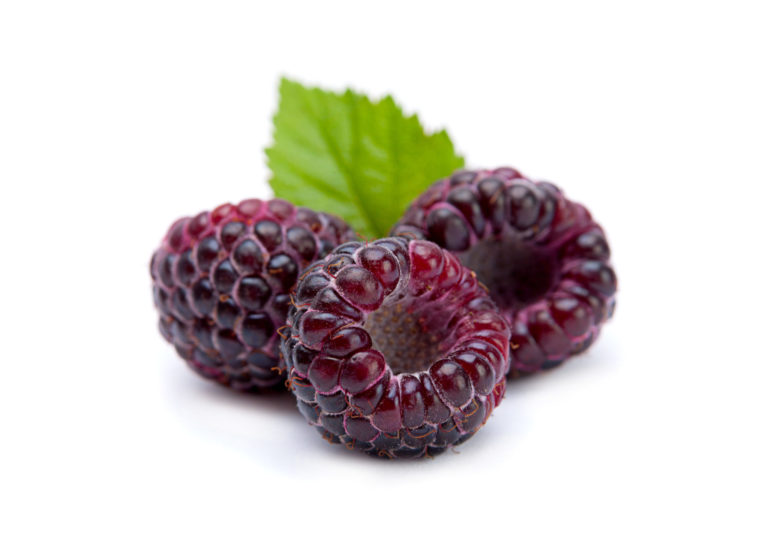
The Black Raspberry, known for its sweetness and health benefits studied further to reveal its chromosome-scale genome.
What is a black raspberry you may ask? Jams, preserves, pies, and liqueur are just a few of the delicious products made with black raspberry. The black raspberry offers much more beyond its exquisite flavors. For instance, did you know it contains a compound called anthocyanins that is used as a dye? It is also used in anti-aging beauty products and contains compounds that may help fight cancer. The useful properties of black raspberry are encoded within the genome.
A multi-national team of scientists have built a full map of the Black Raspberry genome. Teams from New Zealand, Canada, and the U.S.A. contributed to the project led by Drs. Rubina Jibran and David Chagné. The work was published in Nature, Horticulture Research. In the project they leverage Proximo™ Hi-C to order and orient short-read contigs into chromosome-scale scaffolds.
A chromosome-scale reference genome is an important step for basic biology and for breeding programs. Breeders can use this genome while crossing plants to select for traits like color or taste. To learn more about how Hi-C technology was used to improve the black raspberry genome we contacted Dr. Chagné and Dr. Jibran for a Q&A session. We also wanted their take on the scientific value of Proximo Hi-C and to share their experiences working with us.
What is a black raspberry? How is it different from the blackberries we have in Seattle?
The black raspberry we used is no different from the ones found in Seattle. Actually, I remember seeing some black raspberries (also called black-caps) at Pike market few years ago! Washington and Oregon are the largest producers of this delicious crop. Raspberries belong to the genus Rubus, which includes red (Rubus idaeus) and black (R. occidentalis) raspberries, blackberries, loganberries and boysenberries.
There are many curious uses of black raspberries, what’s yours?
Black and red raspberries are great on top of Pavlova, alongside slices of kiwifruit. Pavlova is New Zealand’s iconic dessert served around Christmas time, which is the berry fruit season down under here.
What are molecular breeding technologies? What are some of the traits in black raspberry you’d like to breed for?
Molecular Breeding techniques use DNA to inform selection decisions. My colleague Cameron Peace from Washington State University did a very good review about the use of DNA-informed breeding in fruit tree. Plant & Food Research is leading in the use of molecular tools for breeding fruit species, for example we are using genetic markers to predict if apple seedlings carry certain loci for black spot resistance or if they are likely to be red fruited. The breeding goals for Plant & Food Research’s raspberry breeding programme are high fruit flavour, berry anti-oxidant content, pest and disease resistance and higher productivity.
The initial black raspberry genome assembly was built from short-read data. Why did you choose to scaffold the short-read contigs rather than create a new long-read assembly? Would you get chromosome scale contigs from a long-read assembly?
Actually we took both approaches and we decided we would like to see how much of the short-read assembly we would be putting together using Proximo Hi-C. A long-read based assembly will be released soon and the comparison of both assemblies will be extremely informative on what strategy to use for future assemblies of other crop species.
How did you validate the Proximity Guided Assembly (PGA) scaffolds? How did you correct errors in the scaffolds?
The PGA for black raspberry was first validated by aligning it to a linkage map and then by aligning it to the genome of strawberry (Fragaria vesca) as they have syntenic genomes.
What was the process like in working with Phase Genomics? Would you recommend them to your colleagues?
I enjoy a lot working with Phase Genomics. Black raspberry is not the first genome that we collaborated with Phase Genomics, as we had assembled genomes for kiwifruit and New Zealand manuka previously. The way we work with Phase Genomics is very iterative and they are excellent at trying new methods and assembly parameters until we are satisfied with our assemblies. Every organism has its own challenges when it comes to genome assembly and working with Phase Genomics in a very collaborative way is extremely useful. I have recommended Phase Genomics to colleagues.

 Twitter
Twitter LinkedIn
LinkedIn Email
Email